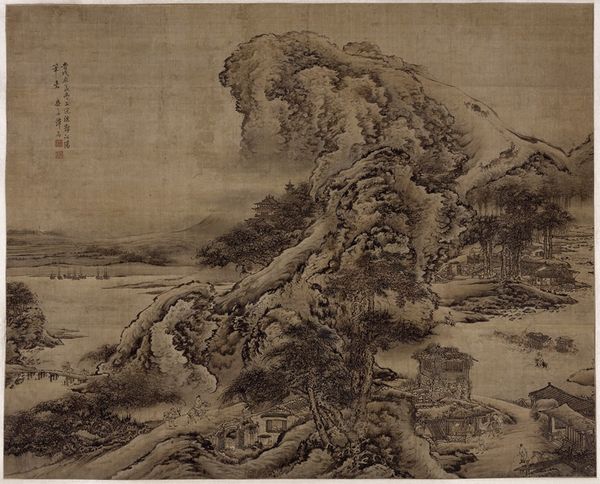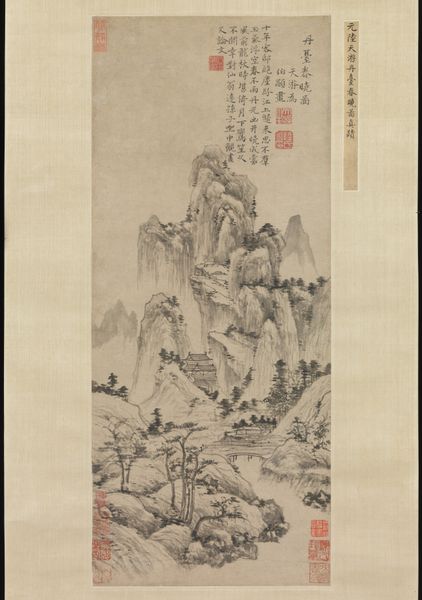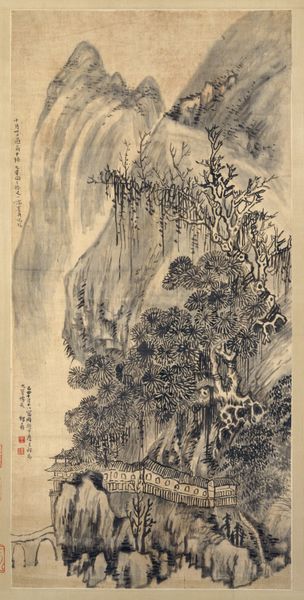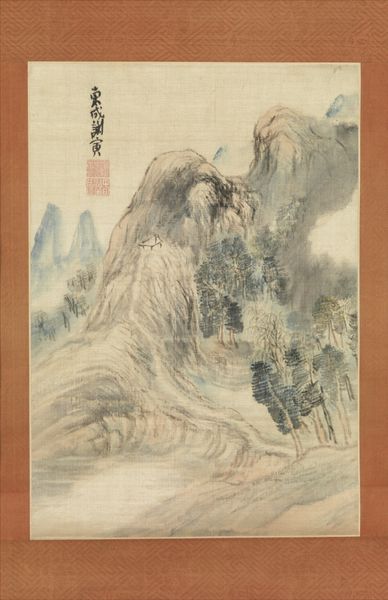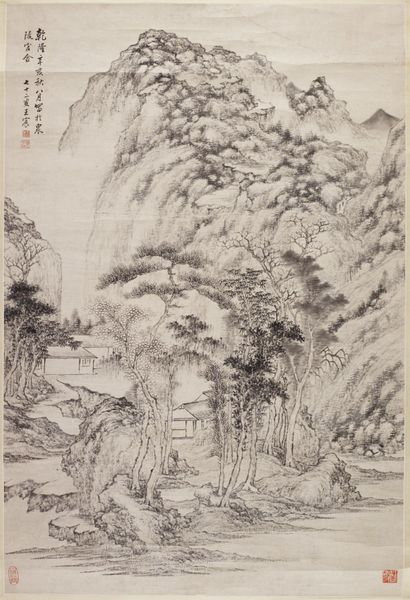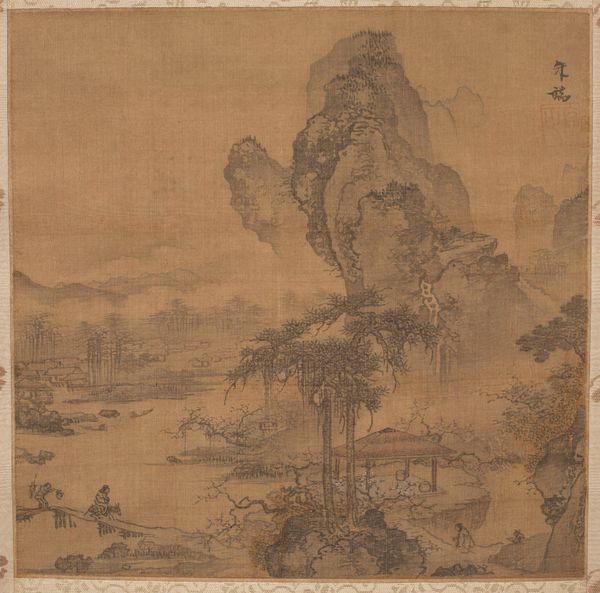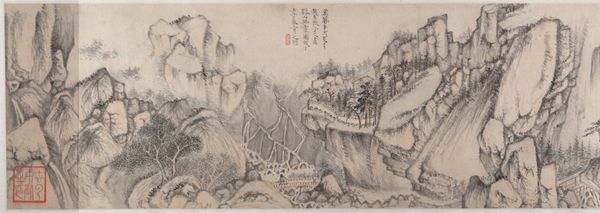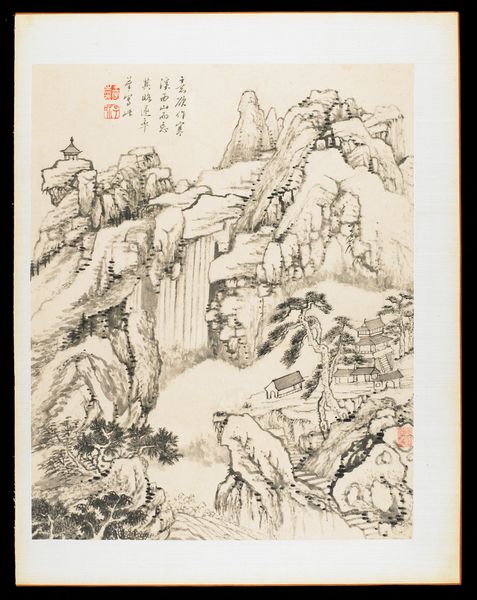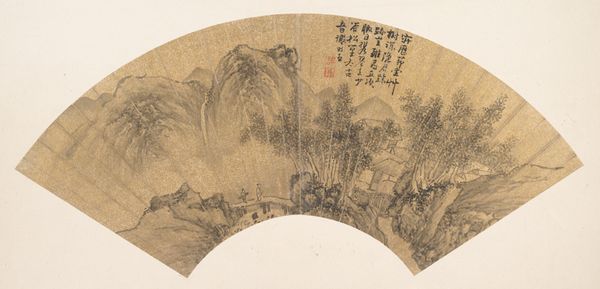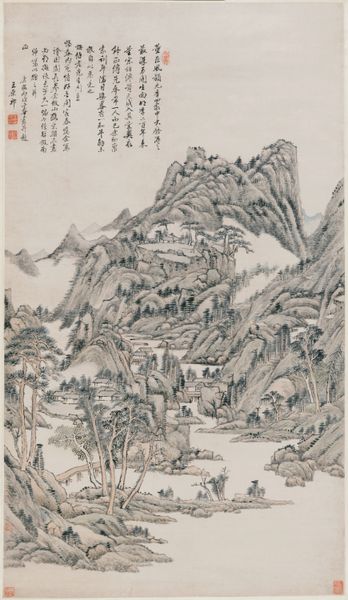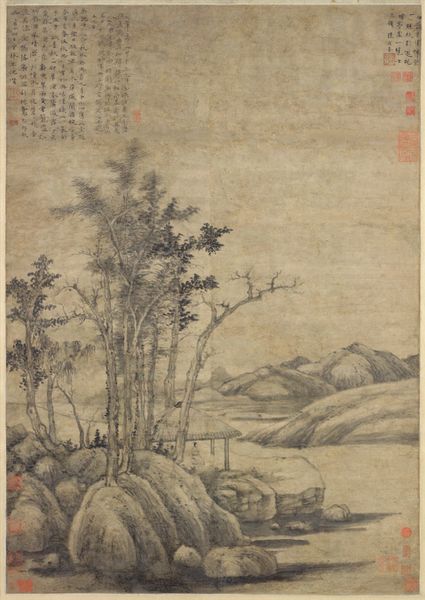
drawing, paper, ink
#
drawing
#
ink painting
#
asian-art
#
landscape
#
paper
#
ink
#
calligraphy
Dimensions: Image: 49 1/2 × 24 in. (125.7 × 61 cm) Overall with mounting: 8 ft. 5 1/4 in. × 31 5/8 in. (257.2 × 80.3 cm) Overall with knobs: 8 ft. 5 1/4 in. × 34 3/4 in. (257.2 × 88.3 cm)
Copyright: Public Domain
Editor: Here we have Kuncan's "Wooded Mountains at Dusk," a landscape rendered in ink on paper from 1666. There’s a kind of misty grandeur, yet something about the delicate ink strokes feels very intimate. How do you interpret the message that he conveys through this piece? Curator: The painting comes to us from a pivotal time, just after the collapse of the Ming dynasty and the establishment of the Qing. The artist, Kuncan, was actually a Buddhist monk, which definitely colors how we interpret this work. Knowing that helps to understand this landscape as less of a representation of place and more of a… a state of mind, almost a kind of refuge, doesn't it seem? The dense, layered mountains are not simply physical forms. Editor: That's interesting; you see them embodying his state of mind after the Ming collapse. Curator: Precisely. It also speaks to the artistic and intellectual climate of the time, when many Ming loyalists turned to art, poetry, and religion to express their resistance and preserve their cultural identity. We see calligraphy that supports this resistance as well. How do the political factors during the shift into the Qing dynasty seem to you when you examine the work? Editor: Now that you mention it, there is definitely an intentional obscurity; it does feel like a resistance statement by being ambiguous to anyone not looking closely. That adds new weight to my interpretation of its intimacy! Curator: Exactly! The misty vagueness, along with the almost overwhelming verticality, might symbolize the social hierarchy. We should be conscious of how art can indirectly convey political dissent by subtly adjusting cultural aesthetics during tumultuous regime shifts. Editor: Wow, I had never really thought about it in those political and cultural terms. This adds so much richness to my viewing. Curator: These ink landscapes become vital records when they encode implicit socio-political commentary for subsequent generations. It’s almost a form of cultural preservation through artistic encoding.
Comments
No comments
Be the first to comment and join the conversation on the ultimate creative platform.

